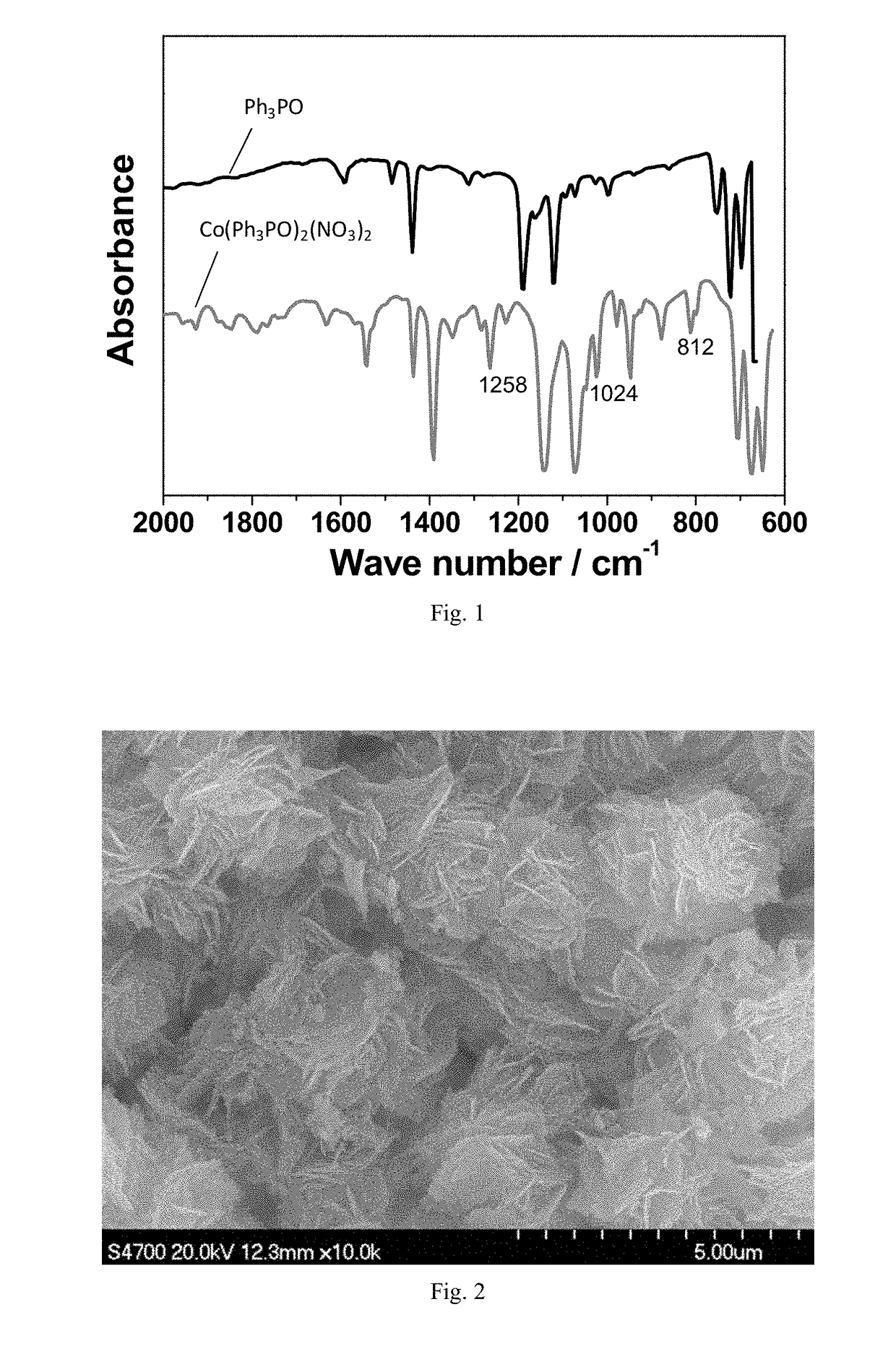Flame-retardant thermoplastic material and expanded beads thereof
- Summary
- Abstract
- Description
- Claims
- Application Information
AI Technical Summary
Benefits of technology
Problems solved by technology
Method used
Image
Examples
example 1
[0205]The raw material ratio and the reaction conditions for the preparation of the flame retardant, the polypropylene composition, the expanded beads and other products in this Example were shown in Tables 3 and 4, and the performance parameters of the expanded beads were also listed in Table 4. In the tables, the flame-retardant component A was phosphine oxide, the flame-retardant component B was the transition metal salt, and the flame-retardant component C was the inorganic flame-retardant component.
(1) Preparation of the (Halogen-Free) Flame Retardant
[0206]Triphenylphosphine oxide and cobalt nitrate were added to ethanol and stirred at a rate of 100 rpm. The mixture was then heated at 40° C. for 4 h under microwave irradiation with heating power of 50 W while stirring. The complex Co(OPPh3)2(NO3)2 formed by triphenylphosphine oxide and cobalt nitrate was obtained by supercritical drying of the material after microwave heating. The structures and microscopic morphology of the co...
example 2
[0219]The flame retardant, the carbon nanofiber antistatic agent, the flame-retardant polypropylene composition and the expanded beads were prepared in a manner similar to that of Example 1, except that the starting materials and the reaction conditions shown in Tables 3 and 4 were different. For example, in this example, HMSPP602 was adopted, the formed halogen-free flame retardant was the complex Ni(OPOt3)2(NO3)2 formed by trioctyl phosphine oxide and nickel nitrate, and the prepared carbon nanofiber antistatic agent contains 3 wt % of nickel.
example 3
[0220]The flame retardant, the carbon nanofiber antistatic agent, the flame-retardant polypropylene composition and the expanded beads were prepared in a manner similar to that of Example 1, except that the starting materials and the reaction conditions shown in Tables 3 and 4 were different. For example, in this example, HMSPP603 was adopted, and the formed halogen-free flame retardant was the complex Co(OPOt3)2(NO3)2 formed by trioctylphosphine oxide and cobalt nitrate.
PUM
| Property | Measurement | Unit |
|---|---|---|
| Temperature | aaaaa | aaaaa |
| Temperature | aaaaa | aaaaa |
| Temperature | aaaaa | aaaaa |
Abstract
Description
Claims
Application Information
 Login to View More
Login to View More - R&D
- Intellectual Property
- Life Sciences
- Materials
- Tech Scout
- Unparalleled Data Quality
- Higher Quality Content
- 60% Fewer Hallucinations
Browse by: Latest US Patents, China's latest patents, Technical Efficacy Thesaurus, Application Domain, Technology Topic, Popular Technical Reports.
© 2025 PatSnap. All rights reserved.Legal|Privacy policy|Modern Slavery Act Transparency Statement|Sitemap|About US| Contact US: help@patsnap.com



